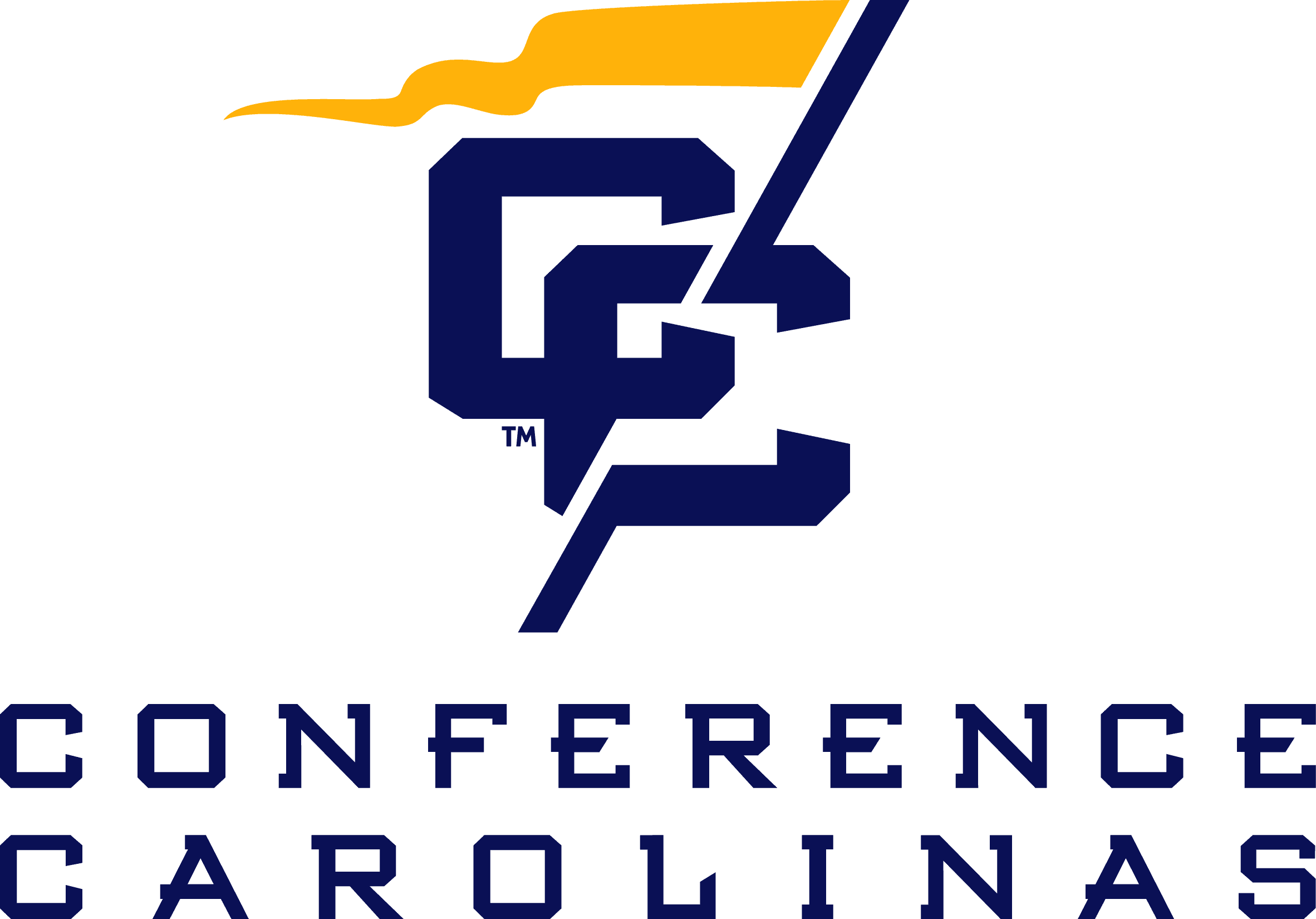April 16, 2020

Francis Marion University to join Conference Carolinas
Francis Marion University athletic department officials announced on Thursday (April 16, 2020) that the school will move to join the Conference Carolinas beginning with the 2021-22 school year. The Patriots will continue to compete in the Peach Belt Conference for the 2020-21 year.
Earlier this week, the Conference Carolinas Presidents voted unanimously in favor of adding Francis Marion and UNC Pembroke as the 12th and 13th members of the NCAA Division II conference.
This will be UNCP’s second time as a member of Conference Carolinas (1976-92), while FMU will be joining Conference Carolinas for the first time – only the school’s third conference affiliation.
“I am excited about this announcement- for our student-body, our nearly 300 student-athletes, our alumni, and fans,” says FMU president Dr. Fred Carter. “We join a conference that includes institutions located closer to home geographically. Less travel time means less time spent out of the classrooms for our students. We are joining what we think is one of the finest Division II conferences in the country- a conference that puts an enormous emphasis on body, mind, and soul in the development of student athletes.”
“I am equally thrilled with this announcement,” says FMU director of athletics Murray Hartzler. “Leading an intercollegiate athletic department, you are always on the lookout for what can enhance your program. When this opportunity came around, it was an obvious decision to make. We join a well-establish conference more in our location footprint that includes institutions we have been playing on the athletic fields for nearly 50 years.”
Francis Marion opened its doors in 1970 with an athletic program that sponsored men’s basketball, men’s golf, and men’s and women’s tennis. Today, the program includes 14 sports – seven each for men and women.
In 1972-73, Francis Marion became a member of District Six of the National Association of Intercollegiate Athletics (NAIA). The women’s athletic program was under the national affiliation of the Association of Intercollegiate Athletics for Women (AIAW) until 1982, when that program also joined the NAIA (and District Six).
While still in District Six, Francis Marion joined the short-lived Palmetto State Conference, which operated for three seasons (1989-92).
In 1990-91, Francis Marion became a charter member of the Peach Belt Athletic Conference (now the PBC), and began the process of moving its national affiliation to Division II of the National Collegiate Athletic Association (NCAA). The school and conference became full-fledged members of NCAA Division II in 1992.
Francis Marion has been represented by student-athletes in NCAA Division II post-season competition every year since moving to NCAA membership in 1992. This includes the 2003 golf national championship, a pair of women’s tennis (doubles) national titles, 18 trips to the men’s tennis tournament, 15 appearances in the women’s tennis tournament, and 10 in women’s basketball.
Prior to joining the NCAA, FMU captured a pair of national championships in women’s basketball (AIAW Division II in 1982 and NAIA in 1986), and placed second in the NAIA in women’s softball in 1987.
As a member of the Peach Belt Conference, Francis Marion twice earned the PBC Commissioner’s Cup trophy, signifying the most successful all-around athletic program in the conference; captured 15 regular-season titles; won nine tournament championships; and is annually among the leaders in the PBC in students qualifying for the Presidents’ (academic) Honor Roll, which requires a B average.
“This is a historic day for Conference Carolinas,” Commissioner Chris Colvin said. “Our goal each and every day is to work to make our league better. We have accomplished that and so much more with the addition of Francis Marion and UNC Pembroke. These two top-notch institutions align tremendously with our conference beliefs. We are thrilled to have them join to help us continue to lead the way in the classroom, in the community and at the highest levels of competition as we strive to be Champions in Body, Mind and Soul.”
The addition of Francis Marion and UNC Pembroke is also a tremendous geographic fit for Conference Carolinas in that it will give the league five member institutions in Eastern North Carolina and South Carolina, which will create a greater geographic balance in the conference and help with scheduling.
It was important to both Francis Marion and UNC Pembroke that they join Conference Carolinas at the same time according to Dr. Carter and UNC Pembroke Chancellor Dr. Robin Cummings.
“Preserving a natural rivalry that has spanned nearly half of a century is extremely important for both universities,” Carter and Cummings said. “The magnitude of the rivalry between the Braves and Patriots has intensified greatly since the first meeting between our athletic teams in December 1971, and that has been overshadowed only by the sportsmanship that has been shown by the student-athletes, coaches and fans from both sides.
“We are extremely proud and excited to now continue that rivalry as a part of Conference Carolinas. The league’s commitment to body, mind and soul aligns completely with the missions of our institutions, and we are excited to help strengthen those directives beginning in 2021-22.”
Conference Carolinas, headquartered in Greenville, S.C., has a rich tradition in roots that dates back to its inception on Dec. 6, 1930. The NCAA Division II athletics conference presently has member schools located in Georgia, North Carolina, South Carolina and Tennessee. Member institutions for the 2020-21 academic year are Barton College, Belmont Abbey College, Chowan University, Converse College, Emmanuel College, Erskine College, King University, Lees-McRae College, University of Mount Olive, North Greenville University, and Southern Wesleyan University.
Conference Carolinas believes in the development and formation of the whole person in body, mind and soul. Conference Carolinas students are nationally recognized for their extraordinary success in the classroom, in the community and at the highest levels of NCAA competition.